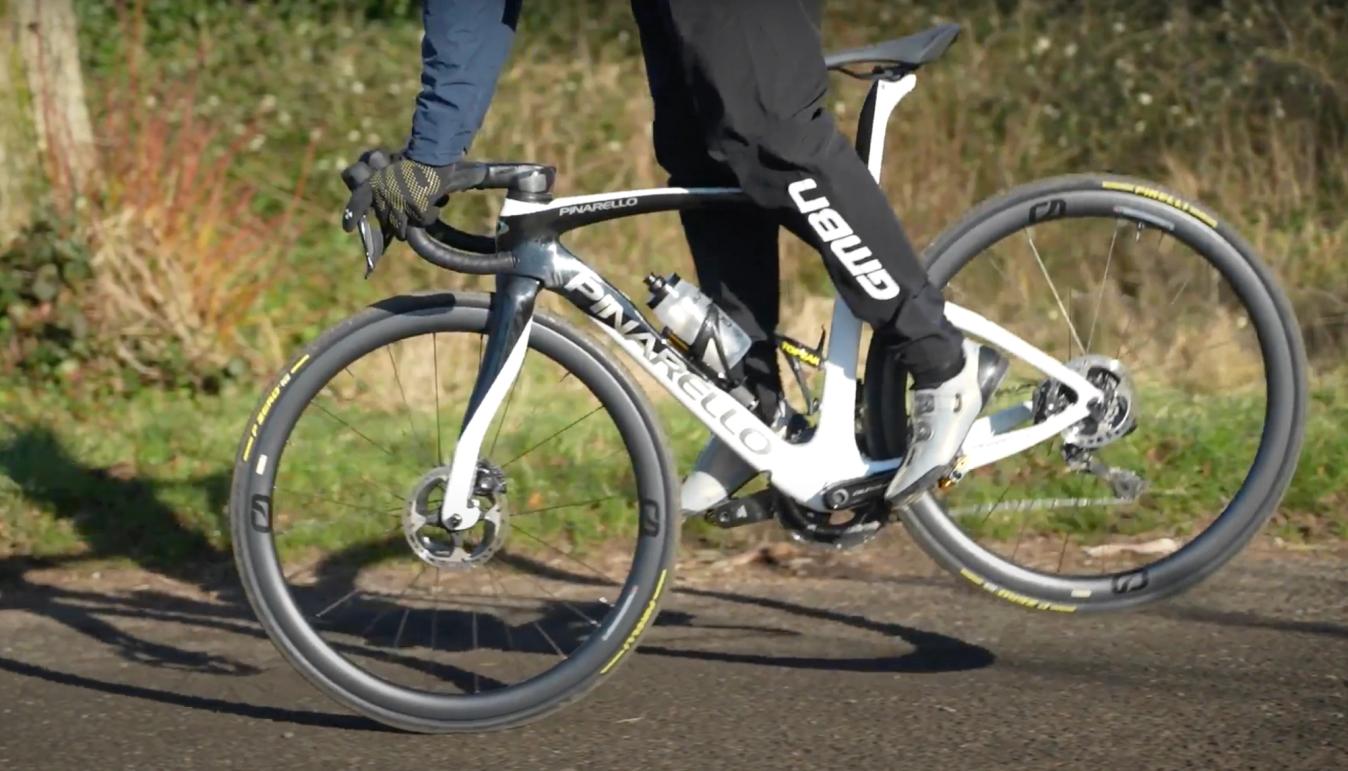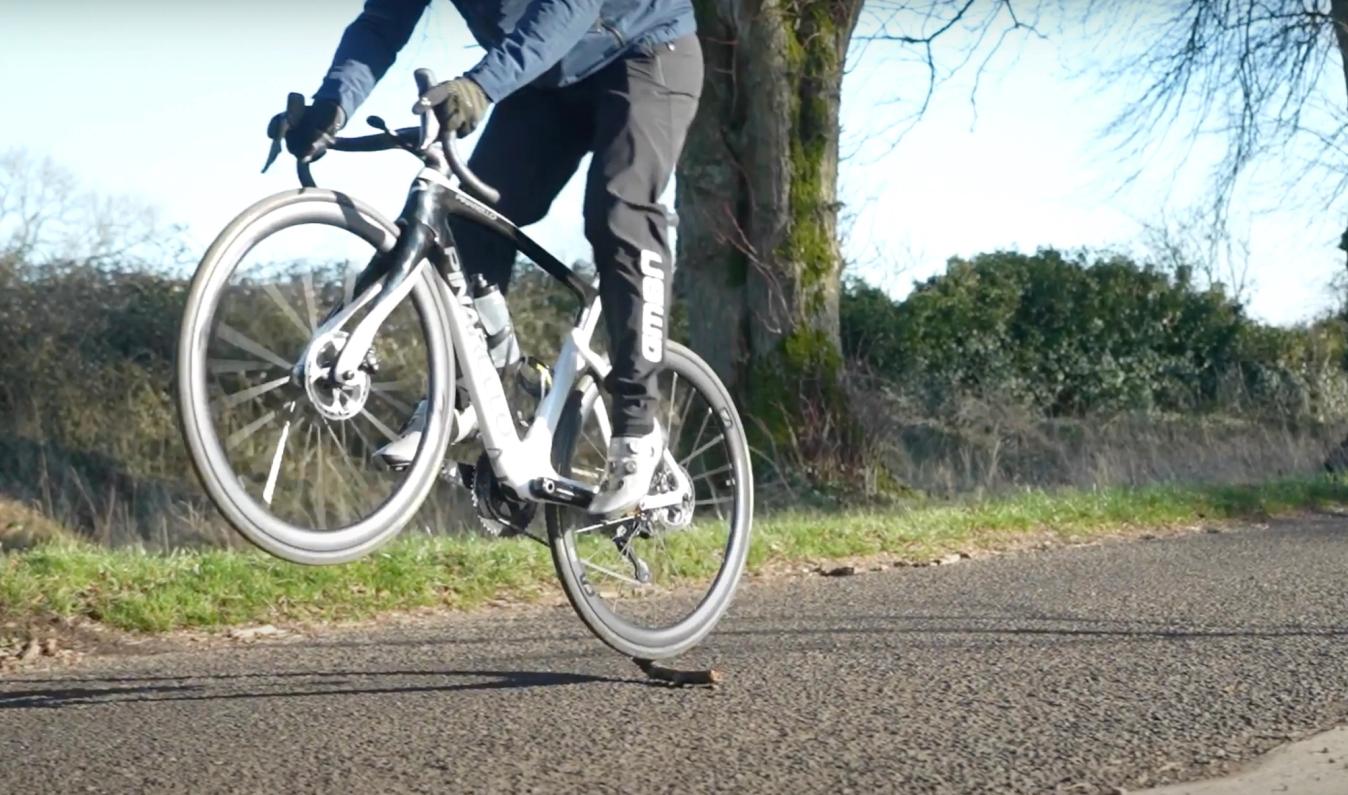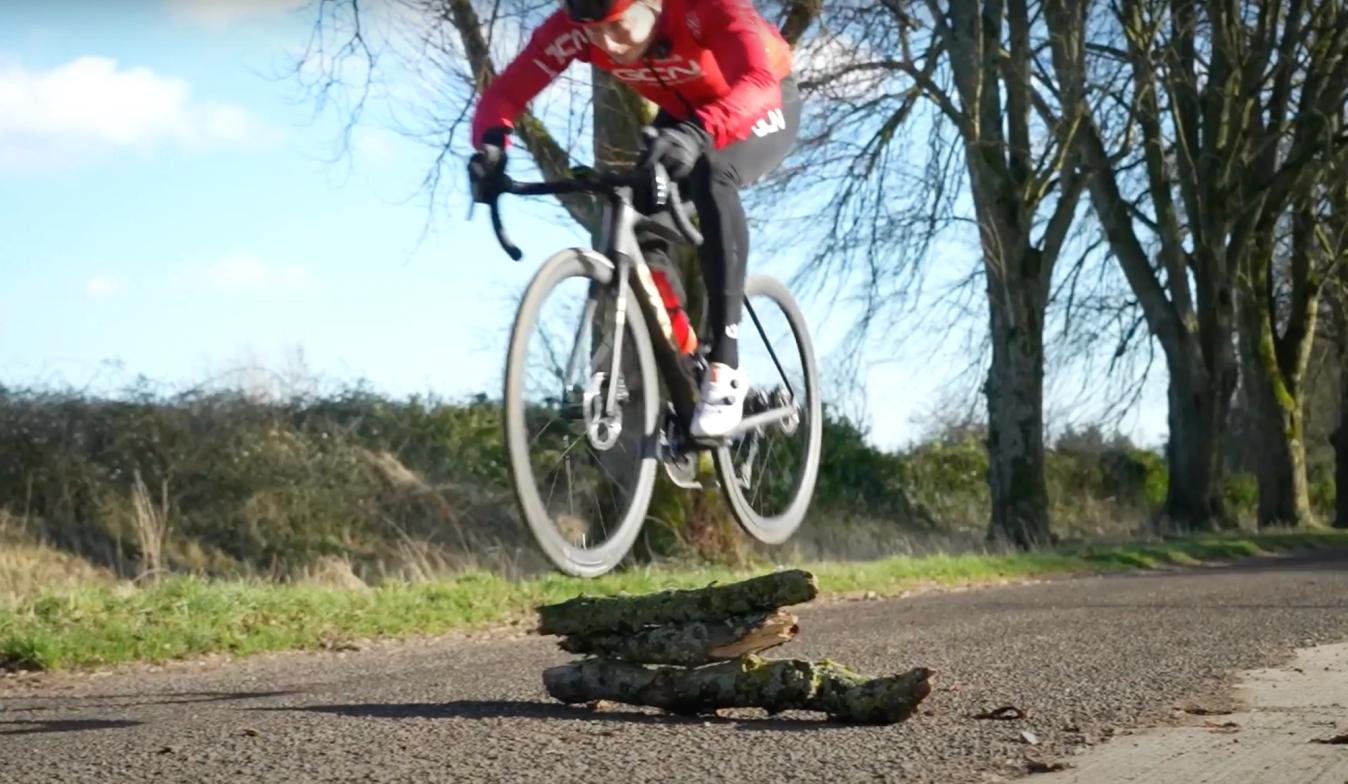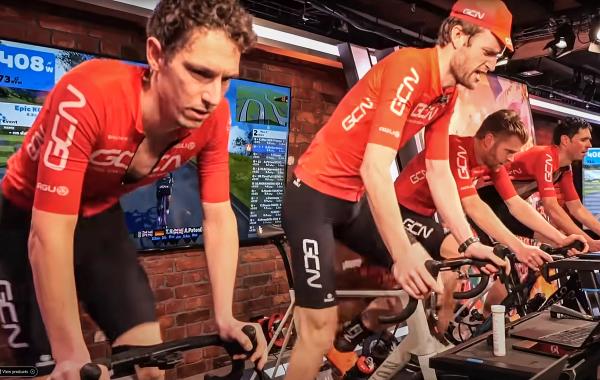How to bunny hop a road bike
The bunny hop is more than just a skill to impress your mates, and learning it can help avoid obstacles on any ride
Alex Hunt
Junior Tech Writer
The ability to lift both wheels off the ground whilst riding can be a convenient skill to have. Being able to hop over obstacles like potholes, debris and curbs confidently can help protect your bike from damage and improve the flow of the ride. However, the consequences of a badly timed bunny hop or a failed attempt altogether can see you careering into exactly the obstruction you were trying to avoid. The key to a good bunny hop is plenty of practice in a low-risk environment like a car park. The more practice you have, the more confident you will be when it comes to using it out on the road.
Before you get started
It’s vital to check your equipment before starting to learn to bunny hop. As a dynamic skill, the chances of falling off the bike are higher than when just out for a ride. So always wear a helmet, along with any additional protective gear that makes you feel comfortable to practice the manoeuvre.
The same must be said for the bike itself. Landing a bunny hop will put some stress on your bike, so make sure that everything is in good working order with no loose bolts.
Understanding the bunny hop
On the surface, a bunny hop seems like a relatively self-explanatory skill but there’s a little more to it than that. Fundamentally there are two types of bunny hop which are commonly referred to as the English bunny hop and the American bunny hop.
The English bunny hop is when both wheels leave the ground at the same time. It’s typically the style that most riders learn when using clipless pedals. It does have some drawbacks but it is the easiest way for clipped-in riders to get their wheels off the ground.
The American bunny hop is a more technical hop that separates the front and the rear wheel lifts. This uses the manipulation of body position and body weight to lift the bike into the air. The advantage of this technique is that you have more control over the bike, can generate more height and therefore distance, plus it means you can lift each wheel closer to the obstacle, which makes it easier to clear things.
Although the English bunny hop is effective, it is not our preferred technique as it mostly uses speed as the main tool for clearing larger distances which naturally increases the risk. In this how-to guide, we will be focusing on the American bunny hop.
Isolate the front wheel lift
The American bunny hop is essentially two different movements joined together. The first of which is the front wheel lift. The most important thing to remember here is that you are not trying to pull your bars up to your chest. Instead, pop the front wheel up by transitioning your weight backwards.
In mountain biking, this technique is called a manual and relies on the movement of your body weight in an L shape to pop the front wheel off the ground. To practise this, start in a tall position out of the saddle with your head above the bars and your pedals level with each other. Drop down to just above saddle height and then slide your weight back around your saddle.

© GCN
Lifting the front wheel with a weight shift, rather than pulling up on the bars is the first step of a successful bunny hop
Depending on your size and the geometry of the bike, the exact amount of movement needed to achieve a front-wheel lift will vary. With a road bike, which is shorter and lighter than a mountain bike, you won't need to pull back or upwards very hard to lift the front wheel off the ground.
When popping the front wheel up it is crucial to keep your fingers covering the rear brake in case things get out of hand. A quick dab of the brake and your front wheel will come straight back to the road.
Isolate the rear wheel lift
Next, let’s focus on the rear wheel. If you’re using clipless pedals, they will do a lot of the heavy lifting for you here. To practice the rear wheel lift you need to stand in a similar body position to how you would end a front wheel lift. This means getting your weight a bit further back on the bike and keeping straight arms and legs. To generate the lift try and move from this position back to a tall central position on the bike. This means moving your hips upwards and a little bit forward.

© GCN
Moving your weight up and forward will bring your rear wheel up without pulling your heels towards your bum
Try and avoid pulling up on the pedals and bringing your heels up towards your bum. Instead, aim to execute this lift with straight legs which will give you more control. As you lift the rear wheel off the ground try and point your toes a little and apply some backwards pressure on the pedals. This will help keep your feet on the pedals if you're using flats, but also helps to bring the rear wheel higher off the ground.
Practise both movements one after the other
Once you are happy with the height and predictability of both your front and rear wheel lifts it’s time to start trying to bring the movements together. To begin with, try a front wheel lift a pause and then a rear wheel lift. Although there is a pause between the movements you are aiming to try and hold the finishing position of the front wheel lift until you begin the rear wheel lift.

© GCN
Bringing both movements together will time and practise to get used to the complete movement
Gradually, as you become more comfortable with these movements you can try and decrease the time between each movement until they start to flow into one another without a pause. This might start to resemble something of a bunny hop with both wheels coming off the ground at the same time however, at this point it can still feel jerky and uncomfortable.
Work on timing
Now comes arguably the hardest part of learning this technique: refining the timing. What separates an okay bunny hop from a great one is a smooth combination of those two parts.
The key thing to get a feel for is when your front wheel is at it's highest point and is about to start dropping back down. The best bunny hops with the most height time the start of the rear wheel lift to begin just as the front wheel has reached its highest point.
Practice on real things
Now you have a bunny hop where both wheels are leaving the ground independently of one another it is time to start practising on real obstacles. These should start small and with little to no risk but they should be big enough for you to know if you have or have not successfully cleared it. Something like a small stick or plastic bottle is perfect to get started.

© GCN
Challenging yourself with sticks or logs can be a great way to develop the timing and height of your bunny hops
When you’re comfortable with the technique and are clearing your practice obstacles with ease it is time to start varying the speed you are approaching. Try at a faster speed and see how the timing differs and try at slower speeds to really force good technique.
The bunny hop can be a hard skill to master but with practice, it is possible to do it on any bike.
Have you managed to master the bunny hop on your road bike? Let us know how you found the experience down in the comments.
.jpg?rect=957,780,3097,3060&w=600&auto=format)











